Del Mar Photonics -
Newsletter Fall 2010 -
Newsletter Winter 2010
If you can't find information about the products that
you are looking for just
e-mail our Sales Team and we'll e-mail or call you back right away!
Nd:YAG lasers and systems
Information about laser systems with Nd:YAG laseres.
Pulsed Nd:YAG laser, Model LQ529 in its base variant can be supplied with build
in second, third or fourth harmonic
generators and with external fifth harmonic generator.
Pulsed Nd:YAG laser, Model LQ829 or LQ929 in its base variant can be supplied
with build in second harmonic
generator and external third or fourth harmonic generators and with external
fifth harmonic generator.
Request a quote
IR viewers
for Nd:YAG lasers
 |
Near IR viewers
High performance infrared
monocular viewers are designed to observe radiation emitted by
infrared sources. They can be used to observe indirect radiation of IR
LED's and diode lasers, Nd:YAG, Ti:Sapphire, Cr:Forsterite, dye lasers and
other laser sources. IR viewers are ideal for applications involving the
alignment of infrared laser beams and of optical components in
near-infrared systems. Near IR viewers
sensitive to laser radiation up to 2000 nm.
The light weight, compact monocular may be used as a hand-held or facemask
mounted for hands free operation.
Ultraviolet viewers are
designed to observe radiation emitted by UV sources. |
Product news and updates - Training Workshops
- Featured Customer - Other News
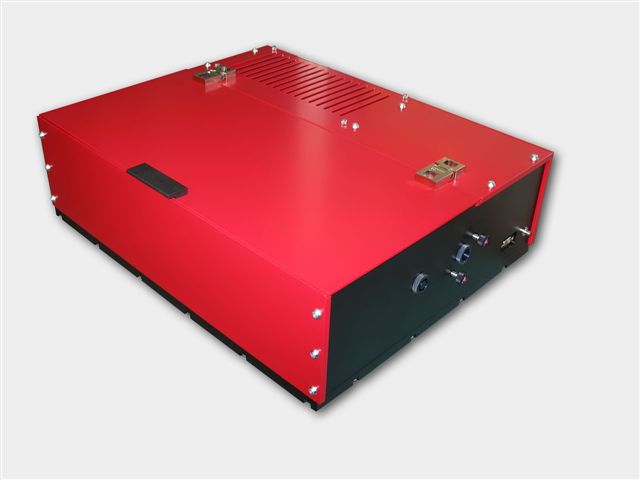 |
Trestles LH Ti:Sapphire
laser
Trestles LH is a new series of high quality femtosecond Ti:Sapphire
lasers for applications in scientific research, biological imaging, life
sciences and precision material processing. Trestles LH includes integrated
sealed, turn-key, cost-effective, diode-pumped
solid-state (DPSS). Trestles LH lasers offer the most attractive pricing
on the market combined with excellent performance and reliability. DPSS LH
is a state-of-the-art laser designed for today’s applications. It combines
superb performance and tremendous value for today’s market and has
numerous advantages over all other DPSS lasers suitable for Ti:Sapphire
pumping. Trestles LH can be customized to fit customer requirements and
budget. Reserve a
spot in our Femtosecond lasers training
workshop in San Diego, California. Come to learn how to build a
femtosecond laser from a kit
|
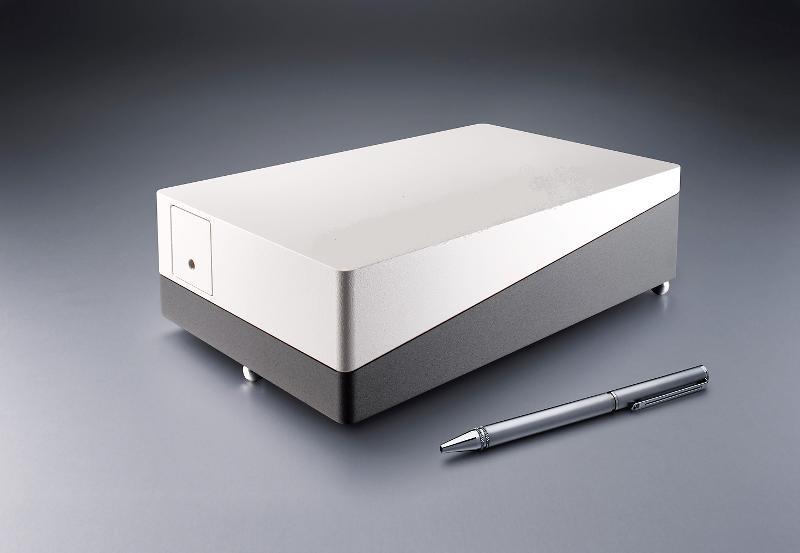 |
DPSS DMPLH lasers
DPSS DMP LH series lasers will pump your Ti:Sapphire laser.
There are LH series lasers installed all over the world pumping all makes & models
of oscillator. Anywhere from CEP-stabilized femtosecond Ti:Sapphire oscillators
to ultra-narrow-linewidth CW Ti:Sapphire oscillators. With up to 10 Watts CW
average power at 532nm in a TEMoo spatial mode, LH series
lasers has quickly proven itself
as the perfect DPSS pump laser for all types of Ti:Sapphire or dye laser.
Ideal for pumping of:
Trestles LH
Ti:Sapphire laser
T&D-scan laser
spectrometer based on narrow line CW Ti:Sapphire laser
|
 |
New laser spectrometer
T&D-scan for research that
demands high resolution and high spectral
density in UV-VIS-NIR spectral domains - now available with
new pump option!
The
T&D-scan
includes
a CW ultra-wide-tunable narrow-line laser, high-precision wavelength meter,
an electronic control unit driven through USB interface as well as a
software package. Novel advanced design of the fundamental laser component
implements efficient intra-cavity frequency doubling as well as provides a
state-of-the-art combined ultra-wide-tunable Ti:Sapphire & Dye laser
capable of covering together a
super-broad spectral range between 275 and 1100 nm. Wavelength
selection components as well as the position of the non-linear crystal are
precisely tuned by a closed-loop control
system, which incorporates highly accurate wavelength meter.Reserve a
spot in our CW lasers training
workshop in San Diego, California. Come to
learn how to build a
CW
Ti:Sapphire laser from a kit
|
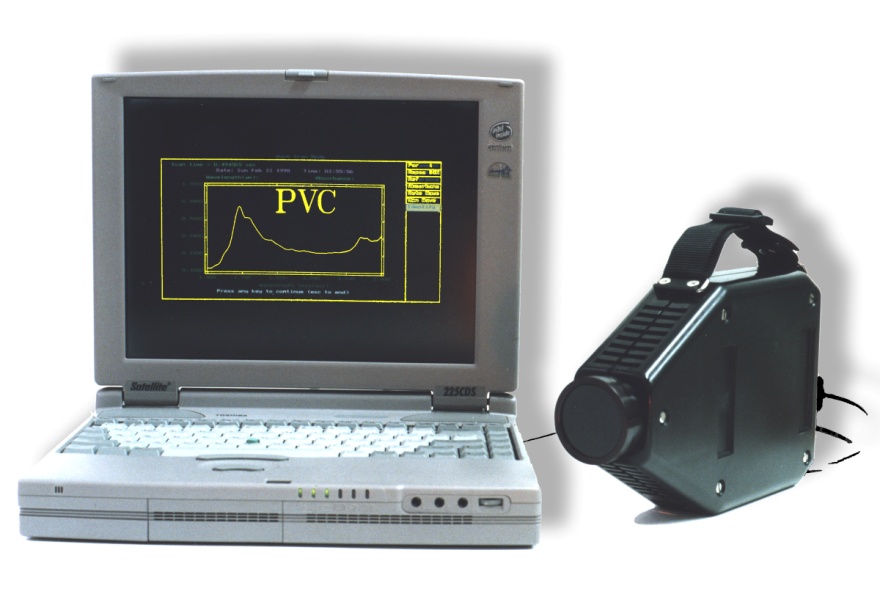 |
AOTF Infrared Spectrometer
Del Mar Photonics offer a handheld
infrared spectrometer based on the
acousto-optic tunable filter (AOTF). This instrument is about the size and
weight of a video camera, and can be battery operated. This unique, patented
device is all solid-state with no moving parts. It has been sold for a wide
variety of applications such as liquid fuel analysis, pharmaceutical analysis,
gas monitoring and
plastic analysis.
Miniature AOTF infrared spectrometer uses
a crystal of tellurium dioxide to scan the wavelength. Light from a light source enters
the crystal, and is diffracted into specific wavelengths. These wavelengths are
determined by the frequency of the electrical input to the crystal. Since there
are no moving parts, the wavelength scanning can be extremely fast. In addition,
specific wavelengths can be chosen by software according to the required algorithm, and therefore can be modified without changing the
hardware. After the infrared radiation reflects off of the sample, it is
converted into an electrical signal by the detector and analyzed by the
computer. Del Mar Photonics is looking for international distributors for
RAVEN - AOTF IR spectrometer for plastic identification and for variety of
scientific and industrial collaborations to explore futher commercial potential
of AOTF technology.
New:
AOTF spectrometer to measure lactose, fat and proteins in milk
|
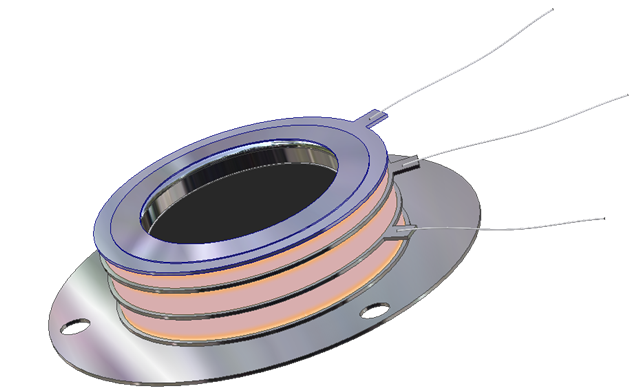 |
Open Microchannel Plate Detector
MCP-MA25/2 -
now in stock!
Microchannel Plate Detectors MCP-MA series are an open MCP detectors
with one or more microchannel plates and a single metal anode. They are intended
for time-resolved detection and make use of high-speed response properties of
the MCPs. MCP-MA detectors are designed for photons and particles detection in
vacuum chambers or in the space.
MCP-MA detectors are used in a variety of applications including UV, VUV and EUV
spectroscopy, atomic and molecular physics, TOF mass–spectrometry of clusters
and biomolecules, surface studies and space research.
MCP-MA detectors supplied as a totally assembled unit that can be easily mounted
on any support substrate or directly on a vacuum flange. They also can be
supplied premounted on a standard ConFlat flanges.
buy online -
ask for research discount!
|
 |
Hummingbird EMCCD camera
The digital Hummingbird
EMCCD camera combines high sensitivity, speed and high resolution.
It uses Texas Instruments' 1MegaPixel Frame Transfer Impactron device which
provides QE up to 65%.
Hummingbird comes with a standard CameraLink output.
It is the smallest and most rugged 1MP EMCCD camera in the world.
It is ideally suited for any low imaging application such as hyperspectral
imaging, X-ray imaging, Astronomy and low light surveillance.
It is small, lightweight, low power and is therefore the ideal camera for
OEM and integrators.
buy online |
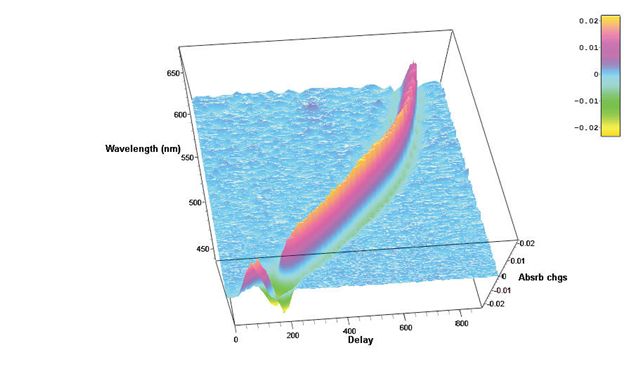 |
Hatteras-D
femtosecond transient absorption data acquisition system
Future nanostructures and biological nanosystems will take
advantage not only of the small dimensions of the objects but of the
specific way of interaction between nano-objects. The interactions
of building blocks within these nanosystems will be studied and optimized on
the
femtosecond time scale - says Sergey Egorov, President and CEO of Del Mar
Photonics, Inc. Thus we put a lot of our efforts and resources into the
development of new Ultrafast
Dynamics Tools such as our Femtosecond Transient Absorption Measurements
system Hatteras. Whether you want to
create a new photovoltaic system that will efficiently convert photon energy
in charge separation, or build a molecular complex that will dump photon energy
into local heat to kill cancer cells, or create a new fluorescent probe for
FRET microscopy, understanding of internal dynamics on femtosecond time scale
is utterly important and requires advanced measurement techniques.Reserve a
spot in our Ultrafast Dynamics Tools
training workshop in San Diego, California.
|
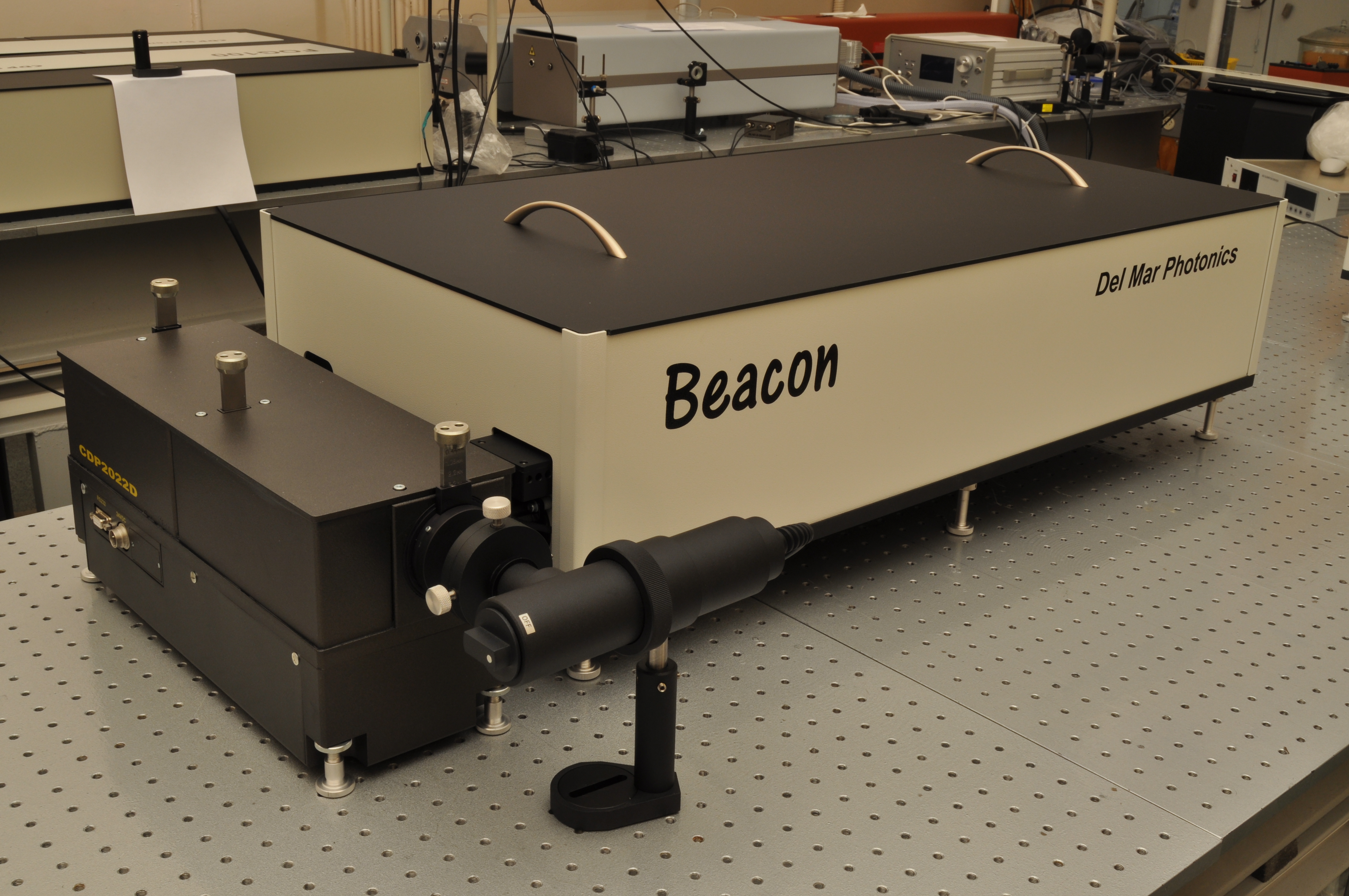 |
Beacon Femtosecond Optically Gated Fluorescence Kinetic Measurement System
-
request a quote -
pdf
Beacon together with Trestles Ti:sapphire oscillator, second and third harmonic
generators. Femtosecond optical gating (FOG) method gives best temporal
resolution in light-induced fluorescence lifetime measurements. The resolution
is determined by a temporal width of femtosecond optical gate pulse and doesn't
depend on the detector response function. Sum frequency generation (also called
upconversion) in nonlinear optical crystal is used as a gating method in the
Beacon femtosecond fluorescence kinetic measurement system. We offer
Beacon-DX for operation together with Ti: sapphire femtosecond oscillators
and Beacon-DA for operation together with femtosecond amplified pulses.
Reserve a
spot in our Ultrafast Dynamics Tools
training workshop in San Diego, California.
|
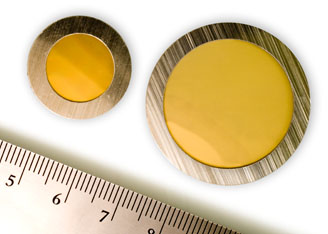 |
Terahertz systems, set ups and components
New band pass and long pass THz optical filters based on porous silicon and metal mesh technologies.
Band pass filters with center wavelengths from 30 THz into GHz range and transmissions up to 80% or better. Standard designs
with clear aperture diameters from 12.5 to 37.5 mm.
Long pass filters with standard rejection edge wavelengths from 60 THz into GHz range. Maximum transmission up to 80% or
better, standard designs at 19.0 and 25.4 mm diameters.
Excellent thermal (from cryogenic to 600 K) and mechanical properties
THz products:
THz Spectrometer kit with Antenna
THz transmission setup
THz time domain spectrometer Pacifica fs1060pca
THz time domain spectrometer Pacifica fs780pca
THz detectors: Golay cell and LiTaO3 piroelectric detectors
PCA - Photoconductive Antenna as THz photomixer
Pacifica THz Time Domain Spectrometer - Trestles Pacifica
Holographic Fourier Transform Spectrometer for THz Region
Wedge TiSapphire Multipass Amplifier System - THz pulses generation
Terahertz Spectroscopic Radar Mobile System for Detection of Concealed Explosives
Band pass filters with center wavelengths from 30 THz into GHz range
Long pass filters with standard rejection edge wavelengths from 60 THz into GHz range
Generation of THz radiation using lithium niobate
Terahertz crystals (THz): ZnTe, GaP, LiNbO3 - Wedge ZnTe
|
 |
iPCA - interdigital Photoconductive Antenna for terahertz waves
Large area broadband antenna with lens array and high emitter conversion
efficiency
iPCA with LT-GaAs absorber, microlens array for laser excitation wavelengths
l £ 850
nm, adjusted hyperhemispherical silicon lens with a high power conversion
efficiency of 0.2 mW THz power / W optical power. The iPCA can be used also
as large area THz detector. The two types iPCAp and iPCAs have the same
active interdigital antenna area but different contact pad directions with
respect to the electrical THz field.
Interdigital Photoconductive Antenna for terahertz waves generation using
femtosecond Ti:Sapphire laser
THz books |
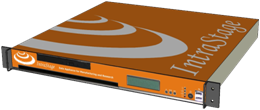 |
IntraStage lowers the cost
of test data management!
Struggling with gigabytes or terabytes of test data?
IntraStage easily transforms test
data from disparate sources into web-based quality metrics and engineering
intelligence you can use.
Contact
us today to discuss your test management requirements and specifications of your
application.
|
Training Workshops
Featured Customer
 |
Trestles LH10-fs/CW laser system at UC Santa Cruz Center of
Nanoscale Optofluidics
Del
Mar Photonics offers new
Trestles fs/CW laser system which can be easily
switched from femtosecond mode to CW and back. Having both modes of operation in one system dramatically increase a
number of applications that the laser can be used for, and makes it an ideal
tool for scientific lab involved in multiple research projects.
Kaelyn Leake is a PhD student in Electrical Engineering. She graduated from
Sweet Briar College with a B.S. in Engineering Sciences and Physics. Her
research interests include development of nanoscale optofluidic devices and
their applications. Kaelyn is the recipient of a first-year QB3 Fellowship.
In this video Kaelyn talks about her experimental research in nanoscale
optofluidics to be done with Trestles LH laser.
Reserve a spot in our
femtosecond Ti:Sapphire training workshop in San
Diego, California during summer 2011 |
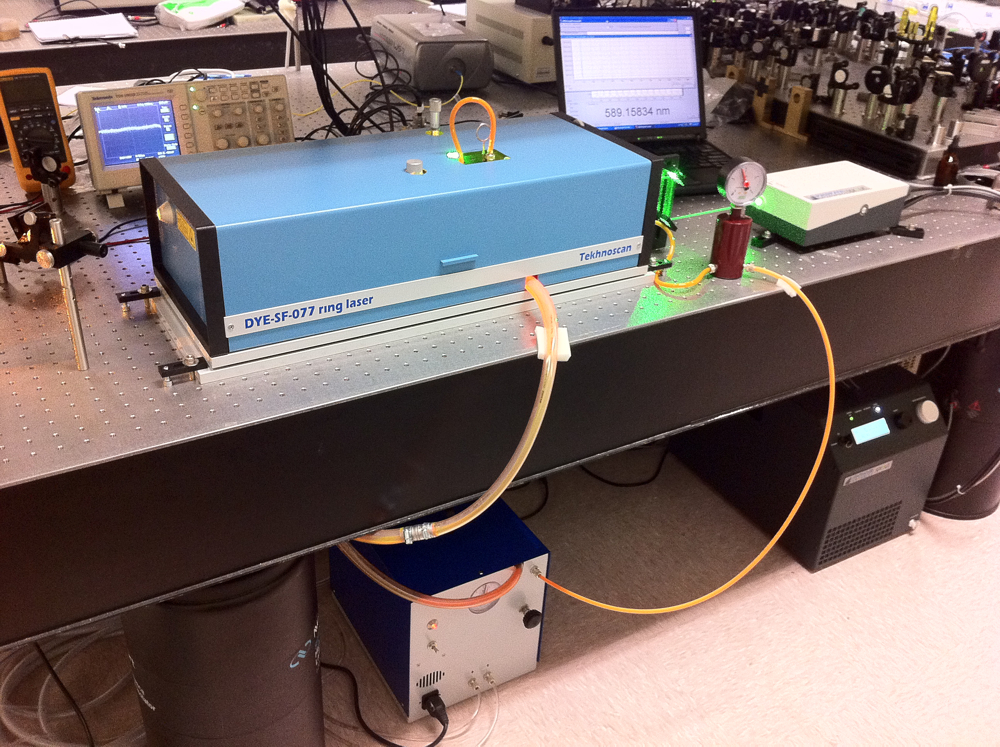 |
Frequency-stabilized CW
single-frequency ring Dye laser DYE-SF-007 pumped by DPSS DMPLH laser installed
in the brand new group of Dr. Dajun Wang at the The Chinese University of Hong
Kong.
DYE-SF-077 features exceptionally narrow generation line width, which
amounts to less than 100 kHz. DYE-SF-077 sets new standard for generation
line width of commercial lasers. Prior to this model, the narrowest line-width
of commercial dye lasers was as broad as 500 kHz - 1 MHz. It is necessary to
note that the 100-kHz line-width is achieved in DYE-SF-077 without the use of an
acousto-optical modulator, which, as a rule, complicates the design and
introduces additional losses. A specially designed ultra-fast PZT is used for
efficient suppression of radiation frequency fluctuations in a broad frequency
range. DYE-SF-077 will be used in resaerch of Ultracold polar molecules,
Bose-Einstein condensate and quantum degenerate Fermi gas and High resolution
spectroscopy |
Other News
Optical Society of Southern California meeting at UCSD OSSC 2011-04-27
Nd:YAG laser ordered by the University of Leon, UANL, Mexico
Wedge 50 Multipass Amplifier pumped with a Darwin-527-30-M DPSS Laser
ordered by Hong Kong customer
New
Trestles LH10-fs/CW femtosecond+CW laser ready for delivery to the
University of California Santa Cruz
Trestles femtosecond
Ti:Sapphire laser delivered to North Carolina State
University
Del Mar Photonics sponsor IONS (International OSA Network of Students)
conference IONS-NA-2 in Tucson, Arizona
IONS-NA-2
website
Best talk and best
poster awards at IONS-Moscow 2010 conference sponsored by Del Mar Photonics
Watch Del Mar Photonics
videos!
Del Mar Photonics is now on Twitter!
Del Mar Photonics featured components
Del Mar Photonics continuously expands its components
portfolio.
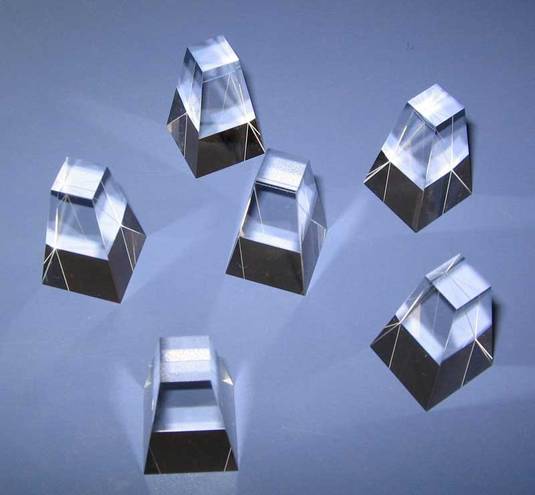
|
Solar
Prisms for Concentrating Photovoltaic Systems (CPV)
Solar cells made of compound semiconductors such
as gallium arsenide are very expensive. Usually very small cells are
installed and various means such as mirrors, lenses, prisms, etc..are used
to concentrate sunlight on the cells. Concentration photovoltaic technology
(CPV) uses the solar radiation with an efficiency of 40%, double that of
conventional solar cells
Del Mar Photonics design custom Concentrating Photovoltaic Systems (CPV) and
supply variety of the optical components for CPV such as
solar prisms shown in the picture.
hexagonal light pipes,
optical rods |
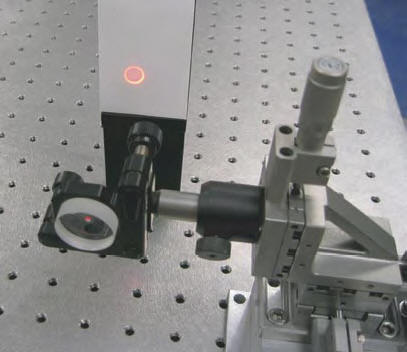
|
Axicon Lens
Axicon lens also known as conical lens or rotationally symmetric prism is
widely used in different scientific research and application. Axicon can be
used to convert a parallel laser beam into a ring, to create a non
diffractive Bessel beam or to focus a parallel beam into long focus depth.
Del Mar Photonics supplies axicons with cone angles range from 130° to
179.5° for use with virtually any laser radiation. We manufacture and supply
axicons made from BK7 glass, fused silica and other materials.
download brochure -
request a quote |
 |
Rutile (TiO2) coupling
prisms
Del Mar Photonics offers optical elements made of high quality synthetically
grown Rutile Titanium Dioxide crystals. Rutile’s strong birefringency, wide
transmission range and good mechanical properties make it suitable for
fabrication of polarizing cubes, prisms and optical isolators. Boules having
high optical transmission and homogeneity are grown by proprietary method.
Typical boules have 10 - 15 mm in dia. and up to 25 mm length. Optical
elements sizes - from 2 x 2 x 1 mm to 12.7 x 12.7 x 12.7 mm. Laser grade
polish quality is available for finished elements. So far we the largest
elements that we manufactured are 12 x15 x 5 mm, in which optical axis is
parallel to 15 mm edge, 5 mm is along beam path, 12 x 15 mm faces polished
20/10 S/D, one wave flatness, parallelism < 3 arc.min. (better specs.
available on request).
more details -
download brochure -
request a quote |
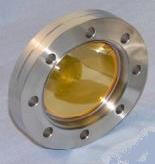 |
Vacuum viewport
Del Mar Photonics offer a range of competitively priced UHV viewports ,
Conflat, ISO or KF including a variety of coatings to enhance performance.
Del Mar Photonics viewports are manufactured using advanced techniques for
control of special and critical processes, including 100 percent helium leak
testing and x-ray measurements for metallization control. Windows Materials
include: Fused silica, Quartz , Sapphire , MgF2, BaF2, CaF2, ZnSe, ZnS, Ge,
Si, Pyrex. Standard Viewing diameters from .55" to 1.94 ".
Coating - a range of custom coatings can applied - which include
- Single QWOT
- Broad Band AR
- V coatings
- ITO
- DLC (Diamond like coating)
more
details -
request a
quote
|
 |
Hydrogen
Thyratrons are used in
such devices as radars with different power levels, high-power pulsed
technical, electrophysical, medical devices and lasers. Sophisticated
design and high quality ceramic-metal envelope determines long lifetime
and very accurate and reliable operation of hydrogen thyratrons under wide range of environmental
conditions.
Applications:
- radars
- pulsed lasers power supplies
- medical apparatus
- electrophysical instrumentation
Triggered Three-Electrode Spark Gap Switches are ceramic-metal sealed off gas
discharge trigatron-type devices with a co-axial trigger electrode. These Gas
Discharge Tubes contain no mercury and, due to an advanced design, feature high
reliability and a long lifetime being operating under wide range of
environmental conditions.
Applications:
- pulsed installation for processing materials
- installations with plasma focus
- pulse power supplies for lasers and other pulse equipment
- medical apparatus such as lithotriptors and defibrillators
- processing systems for petroleum wells |
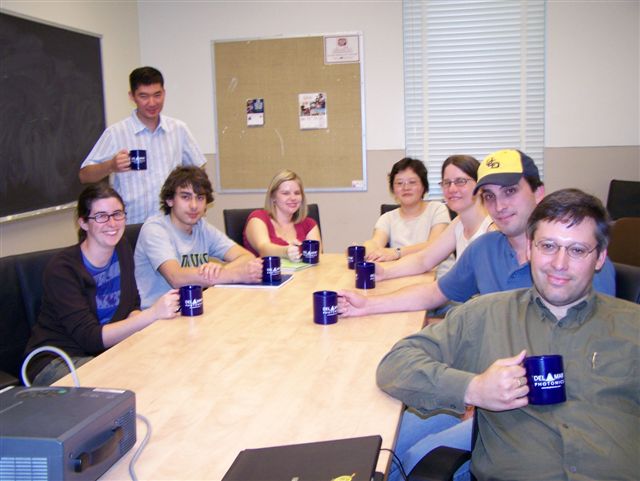 |
We are looking forward to hear from you and help you with
your optical and crystal components requirements. Need time to think about
it?
Drop us a line and we'll send you beautiful Del Mar Photonics mug (or
two) so you can have a tea party with your colleagues and discuss your
potential needs. |
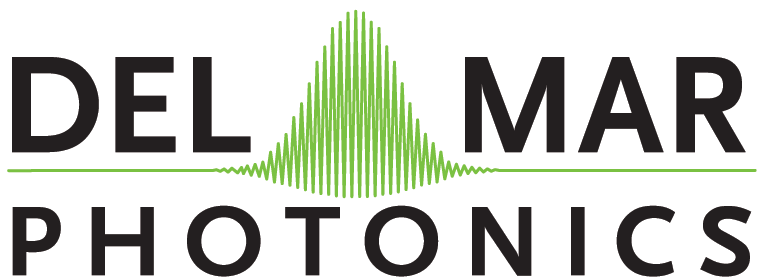
Del Mar Photonics, Inc.
4119 Twilight Ridge
San Diego, CA 92130
tel: (858) 876-3133
fax: (858) 630-2376
Skype: delmarphotonics
sales@dmphotonics.com
Visit us at Photonics West in San Francisco!
Related presentations
Detection of calculus by laser-induced breakdown spectroscopy (LIBS) using an
ultra-short pulse laser system (USPL)
Paper 7884-5 of Conference 7884
Date: Sunday, 23 January 2011
Time: 9:20 AM – 9:40 AM
Author(s): Florian Schelle, Stefanie Krueger, Bernd Oehme, Claudia Dehn,
Matthias Frentzen D.D.S., Andreas Braun, Rheinische Friedrich-Wilhelms-Univ.
Bonn (Germany)
Hide Abstract Add to My Schedule
The aim of this study was to assess the detection of calculus by Laser Induced
Breakdown Spectroscopy (LIBS). We used an Nd:YAG laser at 1064 nm, emitting 8 ps
pulses with a repetition rate of 500 kHz. The average power was set to 5 W. With
a spot size of about 30 µm, the intensity on the tooth surface led to plasma
generation, which was spectrally analyzed. 15 teeth were used to assess the
spectra of calculus and cementum separately. The obtained spectra differed
statistically significantly. Using this new method, a reliable distinction
between calculus and cementum is possible.
Depth-targeted transvascular drug delivery by using annular-shaped
photomechanical waves
Paper 7902-30 of Conference 7902
Date: Sunday, 23 January 2011
Time: 1:00 PM – 1:20 PM
Author(s): Takuya Akiyama, Keio Univ. (Japan); Shunichi Sato, Hiroshi Ashida,
National Defense Medical College (Japan); Mitsuhiro Terakawa, Keio Univ. (Japan)
Hide Abstract Add to My Schedule
We examined the use of annular-shaped photomechanical waves (PMWs) to increase
the pressure at target depths in tissue, by which the permeability of blood
vessels located in the specific depth regions can be increased. We first
confirmed an increased pressure at a target depth in tissue phantoms; target
depth can be controlled by laser parameters. We injected evans blue (EB) into a
rat vein and applied annular PMWs to the anterior tibialis. After perfusion
fixation, we observed fluorescence originating from EB at a target depth of
around 5 mm, demonstrating the capability of annular PMWs for depth-targeted
transvascular drug delivery.
Patterning of indium-tin-oxide (ITO) films using laser-induced forward transfer
(LIFT) technique
Paper 7940-36 of Conference 7940
Date: Tuesday, 25 January 2011
Time: 10:50 AM – 11:15 AM
Author(s): Hironobu Sakata, Tokai Univ. (Japan); Akira Yoshikado, Zeta Photon
Co., Ltd. (Japan); Eisuke Yokoyama, Moriaki Wakaki, Tokai Univ. (Japan)
Hide Abstract Add to My Schedule
Indium-tin-oxide (ITO) films are widely used as transparent conducting materials
for electronic or optoelectronic devices. This study aims at the patterning of
ITO films using the laser-induced forward transfer (LIFT) technique. A 2ωNd:YAG
pulsed laser (530nm in wavelength) was irradiated on a glass substrate with ITO
film on the rear side and the beam was scanned in one direction X, to which
another receiving glass was placed with or without air gap. The beam was also
moved to Y direction. Linear patterns of ITO film were deposited on the
receiving glass by the beam scanning. ITO film patterning and In, Sn elements
transfer during this process were confirmed by SEM observation and XPS
measurement. Optimization of the laser irradiation conditions is needed further
to obtain desired patterns.
Optically triggered Cr:YAG Q-switched Nd:YAG laser
Paper 7912-34 of Conference 7912
Date: Tuesday, 25 January 2011
Time: 2:30 PM – 2:50 PM
Author(s): Brian J. Cole, Alan D. Hays, Jonathan Lei, Bradley W. Schilling, Lew
Goldberg, U.S. Army RDECOM CERDEC NVESD (United States)
Hide Abstract Add to My Schedule
We describe a pulse timing jitter reduction technique for the passively
Q-switched (PQS) Nd:YAG laser via direct bleaching of the Cr:YAG saturable
absorber. It was found that a fluence of 70 kW/cm2, required to enable the
optical triggering effect, could be reached using a single 3 mm wide mini-laser
diode bar mounted on a compact heatsink. In order to miniaturize the triggering
setup, a compact 300 A pulse driver, with a <0.5 microsecond rise-time and 3-5
microsecond duration was developed for pulsing the 3 mm diode bar. These
components have been combined to demonstrate a compact brassboard implementation
of the optically triggered passively Q-switched laser.
High-power diode pumped crystal fiber amplifier for passively Q-switched Nd:YAG
microlaser
Paper 7912-38 of Conference 7912
Date: Tuesday, 25 January 2011
Time: 5:00 PM – 5:20 PM
Author(s): Igor Martial, Lab. Charles Fabry (France) and FiberCryst (France);
François Balembois, Lab. Charles Fabry (France); Julien Didierjean, FiberCryst
(France); Patrick Georges, Lab. Charles Fabry (France)
Hide Abstract Add to My Schedule
The Master Oscillator Power Amplifier configuration is very useful to extend
laser performance of passively Q-switched Nd:doped microlasers in view of
material processing applications. Different configurations and gain media have
already been used in the past few years and crystal fibers emerged as an
interesting new laser medium bridging the gap between the bulk lasers and the
fiber lasers. In this work, a passively Q-switched Nd:YAG microchip laser
generating 80 µJ, 500 ps pulses with a repetition rate of 1 kHz was efficiently
amplified by a simple pass, diode-pumped Nd:YAG crystal fiber amplifier to
achieve 1.2 mJ pulses.
High-power diode pumped crystal fiber amplifier for passively Q-switched Nd:YAG
microlaser
Paper 7914-38 of Conference 7914
Date: Tuesday, 25 January 2011
Time: 5:00 PM – 5:20 PM
Author(s): Igor Martial, Lab. Charles Fabry (France) and FiberCryst (France);
François Balembois, Lab. Charles Fabry (France); Julien Didierjean, FiberCryst
(France); Patrick Georges, Lab. Charles Fabry (France)
Hide Abstract Add to My Schedule
The Master Oscillator Power Amplifier configuration is very useful to extend
laser performance of passively Q-switched Nd:doped microlasers in view of
material processing applications. Different configurations and gain media have
already been used in the past few years and crystal fibers emerged as an
interesting new laser medium bridging the gap between the bulk lasers and the
fiber lasers. In this work, a passively Q-switched Nd:YAG microchip laser
generating 80 µJ, 500 ps pulses with a repetition rate of 1 kHz was efficiently
amplified by a simple pass, diode-pumped Nd:YAG crystal fiber amplifier to
achieve 1.2 mJ pulses.
A single frequency Nd:YAG Q-switched laser with timely controllable firing time
by a gated Pockels cell
Paper 7912-84 of Conference 7912
Date: Tuesday, 25 January 2011
Time: 6:00 PM
Author(s): Frank F. Wu, Anatoliy I. Khizhnyak, Vladimir B. Markov, MetroLaser,
Inc. (United States)
Hide Abstract Add to My Schedule
A single frequency Q-switched Nd:YAG laser with time-controllable firing is
discussed. A ring-cavity configuration is used to trap CW seeded radiation that
equalizes a short pulse seeded in the slave cavity at Pockels cell's rising
edge. Such seeding injection results in unidirectional Q-switched lasing.Our
earlier design has utilized a two-Pockels cells configuration to open the slave
cavity and dump the Q-switched laser pulse. Current design uses a single gated
Pockels cell to realize the following two functions: (1) opening the slave
cavity and at same time perform of seeding, and (2) dump the Q-switched pulse
when the slave lasing is optimized. Since the Q-switch firing time is precisely
controlled by the Pockels cell's timing, thus laser firing can be precisely time
controlled. The advantage of the realized regime is in stable laser operation
with no need in adjustment of the cavity mode. We demonstrate that the frequency
of the Q-switched laser matches well to the injected laser.
Demonstration of a high power 1.5344 micrometer output Nd:YAG pumped OPO
Paper 7917-70 of Conference 7917
Date: Tuesday, 25 January 2011
Time: 6:00 PM
Author(s): Michael D. Wojcik, Robert Foltynowicz, Utah State Univ. (United
States)
Hide Abstract Add to My Schedule
Lidar remote sensing is gaining wider acceptance in environmental monitoring
community. Therefore, eye-safety is an increasingly important requirement for
lidar systems. High power laser pulses (> 200 mJ/pulse) are often required to
achieve adequate signal-to-noise at meaningful ranges (>15 km) with a single
laser shot. Nd:YAG based systems are a convenient and reliable way to achieve
high power pulses, but there are substantial challenges to address when using a
Nd:YAG to generate eye-safe (1.4-2.1 m) pulses. Here we demonstrate an
optoparametric oscillator (OPO) with >20% conversion efficiency designed to be
used as transmitter in a lidar remote sensor. The OPO is a regenerative
circulating design using two KTA (=90°, =0°) as the non-linear media. The OPO
is pumped by 45 W (1.5 J/pulse, 30 Hz) of 1064 nm light generated by an
injection-seeded Nd:YAG laser. Significant performance enhancement was seen when
the OPO was externally seeded using an external 1.5344 m DFB telecom laser.
Efficient compensation of thermal birefringence of a flash-lamp pumped Nd:YAG
laser by a simple but novel method
Paper 7912-89 of Conference 7912
Date: Tuesday, 25 January 2011
Time: 6:00 PM
Author(s): Prasanta K. Datta, Shyamal Mondal, Satya P. Singh, Somenath Dutta,
Sudarsan Bera, Subhra P. Dey, Indian Institute of Technology, Kharagpur (India)
Hide Abstract Add to My Schedule
A simple but novel technique for eliminating depolarization loss resulting from
thermally induced stress birefringence of a flash lamp-pumped free running
Nd:YAG laser is reported here. The output characteristics of the beam with
minimum depolarization loss have been systematically investigated by testing
various resonator configuration, pump repetition rate and pump power for a
Nd:Yag rod of 4mm diameter and 65mm length. It is shown that, by a tilted
Glan-Taylor polarizer inside a stable cavity optimally reduces depolarization
loss up to 13% for a nearly diffraction limited beam. The observed effect is
accounted by determining the depolarization Loss function.
Influence of UV illumination on the cold temperature performance of a LiNbO3
Q-switched Nd:YAG laser
Paper 7912-76 of Conference 7912
Date: Tuesday, 25 January 2011
Time: 6:00 PM
Author(s): Brian J. Cole, Vernon King, Jeffrey Leach, Lew Goldberg, U.S. Army
RDECOM CERDEC NVESD (United States)
Hide Abstract Add to My Schedule
This paper will describe a technique based on UV illumination as a means to
compensate pyrocharges accumulated on the end face of a LiNbO3 Q-switch that are
associated with cold temperature operation and/or a rapid change in temperature.
This method uses commercially available low cost UV LEDs that flood illuminate
the LiNbO3 from the side. A LiNbO3 actively Q-switched Nd:YAG laser was
evaluated over temperature and shown to have robust performance with rapid
temperature cycling to cold temperatures (to negative 20C) in the presence of UV
illumination, without evidence of pre-lasing that was otherwise observed with no
UV illumination of the LiNbO3.
Laser micro welding of copper using a 532nm Nd:YAG laser
Paper 7920-51 of Conference 7920
Date: Tuesday, 25 January 2011
Time: 6:00 PM
Author(s): Geoff J. Shannon, Miyachi Unitek Corp. (United States)
Hide Abstract Add to My Schedule
Significant growth for improved electrical or signal performance with minimizing
component size is increasing the usage of high conductivity materials. Copper
represents the number one material of choice however can present significant
challenges for joining. The joining options available are crimping, soldering,
ultrasonic bonding, resistance welding and laser welding. Crimping and soldering
have several disadvantages that include low electrical conductivity connection
and weak joints. Ultrasonic bonding is an effective technique for joining copper
however is limited by the parts resistance to mechanical force, joint access and
joint geometry. Resistance welding is a viable option however with small
electrodes there is a major emphasis on electrode maintenance. Laser welding
offers an autogenous non contact process with good weld strength and no weld
consumables however due to the reflectivity of copper to the 1064nm laser light
has struggled to provide a reliable welding solution, particularly for micro
welding. Much of the previous work on laser micro welding of copper has centered
around the use of anti reflection coatings, initial spike pulse shaping, oxygen
assist gas mixtures, and the use of hybrid laser/laser welding techniques using
a q switched 532nm coupling laser with a 1064nm pulsed Nd:YAG welding laser.
These processes have been somewhat effective but do not offer a rugged high
volume manufacturing solution. A 532nm pulsed Nd:YAG laser has been developed
with millisecond pulses, 1.5kW peak power, 4J pulses and up to 5 W of average
power to provide a laser source that offers stable volume production welding of
small electrical connections. The patented laser architecture is briefly
described, with the focus of the paper showing experimental processing data with
examples of industrial applications.
Passively Q-switched quasi-continuously pumped 2.4% Nd:YAG laser in a bounce
geometry
Paper 7912-73 of Conference 7912
Date: Tuesday, 25 January 2011
Time: 6:00 PM
Author(s): Michal Jelínek, Václav Kubecek, Miroslav Cech, Petr Hiršl, Czech
Technical Univ. in Prague (Czech Republic)
Hide Abstract Add to My Schedule
We report on quasi-continuously pumped laser based on highly 2.4at.% doped
crystalline Nd:YAG in a bounce geometry passively Q-switched by a Cr:YAG and
V:YAG saturable absorber respectively. The optimization of laser parameters and
successive pulse amplification in the second Nd:YAG crystal led to efficient
operation. At 1.06 um the oscillator 5 ns long output pulse with energy of 1.5
mJ was further amplified to 4 mJ. At 1.3 um the 13 ns long output pulse with
energy of 600 uJ was amplified to 800 uJ in single pass. The details of
resonator and pumping optimization will be also discussed.
Study on the 1123 nm continuous-wave ceramic Nd:YAG laser
Paper 7912-67 of Conference 7912
Date: Tuesday, 25 January 2011
Time: 6:00 PM
Author(s): Sasa Zhang, Qingpu Wang, Xingyu Zhang, Zhaojun Liu, Aiqun Long,
Shandong Univ. (China)
Hide Abstract Add to My Schedule
Highly efficient 1123 nm continuous-wave lasers are realized with ceramic Nd:YAG
materials. A fiber-coupled continuous-wave 808-nm diode laser is used as the
pumping source. Two ceramic Nd:YAG rods with the same length of 10 mm and
different Nd-doping concentrations are employed during our experiments. With the
same incident diode power of 26.1 W, a cw output power of up to 10.8 W is
obtained with the 1.0 at. %-Nd-doped rod, while 8.2 W output power is generated
from the 0.6 at. %-Nd-doped rod. The highest conversion efficiency from diode
power to 1123-nm laser power is 43.8% and 31.4%, respectively, for the two
Nd:YAG rods.
High power 808 nm VCSEL arrays for pumping of compact pulsed high energy Nd:YAG
lasers operating at 946 nm and 1064 nm for blue and UV light generation
Paper 7912-36 of Conference 7912
Date: Tuesday, 25 January 2011
Time: 3:10 PM – 3:30 PM
Author(s): Robert Van Leeuwen, Yihan Xiong, Laurence S. Watkins, Jean-Francois
Seurin, Guoyang Xu, Qing Wang, Chuni L. Ghosh, Princeton Optronics, Inc. (United
States)
Hide Abstract Add to My Schedule
High power 808 nm VCSEL arrays were developed to pump compact pulsed Nd:YAG
lasers. A QCW side-pumped passively q-switched Nd:YAG laser operating at 1064 nm
produced linearly polarized 4 ns IR pulses with 4.7 mJ pulse energy. These
pulses were externally frequency doubled and quadrupled resulting in 2.5 mJ
pulse energy at 532 nm and 0.8 mJ at 266 nm respectively. A similar but actively
q-switched side-pumped Nd:YAG laser operating at the weaker quasi three-level
946 nm transition produced 12 mJ IR in a 27 ns pulse. This output was frequency
doubled to produce 473 nm blue laser light.
Advances in Lasers and their Impact on Industrial Applications
Date: Wednesday, 26 January 2011
Time: 11:50 AM – 12:30 PM
Author(s):
Hide Abstract Add to My Schedule
Paul E. Denney, Connecticut Ctr. for Advanced Technology, Inc. (USA)
Abstract: Industries have accepted lasers for a number of applications over the
past twenty plus years. Laser cutting, drilling, additive manufacturing,
marking, scribing/etching, and welding have been accepted as common practices by
industries ranging from electronics to automotive. These applications primarily
utilized carbon dioxide (CO2) and Nd:YAG lasers which had become "mature".
With development of direct diode, fiber, and disk based laser technologies, the
type of lasers for industrial applications are again in flux. These new laser
technologies offer economic and technical advantages over the traditional
industrial lasers resulting in replacement of older system, expansion in
applications for economic or technical reasons, and development of new
applications. The presentation will concentrate on how the differences in the
new laser technologies are impacting industrial applications and will give some
examples.
Biography: Paul Denney is an Application Engineer at Lincoln Electric. He has
over 28 years in laser materials processing previously working at the CCAT, EWI,
ARL Penn State, Westinghouse Electric R & D Center, and the Naval Research
Laboratory. Mr. Denney has his BS and MS in metallurgy from MIT. He is a Fellow
Member of LIA and a member of ASM and AWS. He is a co-inventor on 14 laser
related patents.
Modified Sellmeier equation for ZnGeP2 in the 0.97-1640μm range
Paper 7917-67 of Conference 7917
Date: Tuesday, 25 January 2011
Time: 6:00 PM
Author(s): Nobuhiro Umemura, Chitose Institute of Science and Technology (Japan)
Hide Abstract Add to My Schedule
This paper reports the modified Sellmeier equations for ZnGeP2 (ZGP) that
provide excellent reproduction of the phase-matching conditions for DFG between
the two CO2 laser wavelengths, and the Nd:YAG laser and the Nd:YAG laser-pumped
OPO in the THz region. Model calculations based on these Sellmeier equations
strongly indicate that there is no significant difference in the refractive
indices of the non-annealed and annealed crystals from 1.0642μm to 1640μm
(0.18THz).
Output characteristics of 579nm Raman laser for medical application
Paper 7917-60 of Conference 7917
Date: Tuesday, 25 January 2011
Time: 6:00 PM
Author(s): Yeong-Sik Kim, Woo-Jin Jeon, Dankook Univ. (Korea, Republic of);
Eun-Joo Hahn, Univ. of Suwon (Korea, Republic of)
Hide Abstract Add to My Schedule
All-solid-state intracavity Raman laser using a ceramic Nd:YAG laser and a
KGd(WO4)2 nonlinear crystal has been fabricated and its output characteristics
has been investigated for the purpose of medical application. Yellow laser light
at the wavelength of 579 nm could be obtained by 2nd harmonic generation using
an LBO crystal from the 1st Stokes wavelength of 1159nm which was converted by
stimulated Raman scattering with the fundamental wavelength of Nd:YAG laser.
Comparison of spectroscopic properties of neodymium-doped aluminium garnet
(Nd:YAG) ceramics obtained by reactive sintering of Al2O3, Y2O3 and Nd2O3 and by
synthesis of nanocrystalline Nd:YAG powders
Paper 7934-46 of Conference 7934
Date: Wednesday, 26 January 2011
Time: 6:00 PM
Author(s): Anna Kozlowska, Magdalena Nakielska, Institute of Electronic
Materials Technology (Poland); Dariusz Podniesinski, Institute of Electronic
Materials Technology (Poland) and Military Univ. of Technology (Poland); Helena
Weglarz, Anna Wajler, Zdzislaw Librant, Tadeusz Lukasiewicz, Institute of
Electronic Materials Technology (Poland)
Hide Abstract Add to My Schedule
In the present work, the spectroscopic properties of ceramics obtained by two
different methods are compared. First method relies on solid-state reaction of
nanometric oxide powders, i.e. Al2O3, Y2O3 and Nd2O3. Second method is the
synthesis of neodymium-doped aluminium garnet nanocrystalline powders prepared
by coprecipitation technique. For all ceramic samples absorption, fluoresce and
decay data is presented. In the part devoted to the Nd:YAG nanocrystalline
powders, the spectroscopic data for both powders and synthesized ceramics is
analyzed and discussed. Superior results have been obtained for the reactive
sintering samples which show the spectroscopic properties comparable to single
crystal counterparts.
Laser beam uniformity and stability using homogenizer based fiber optic launch
method: square core fiber delivery
Paper 7894-39 of Conference 7894
Date: Sunday, 23 January 2011
Time: 1:40 PM – 2:00 PM
Author(s): Todd E. Lizotte, Hitachi Via Mechanics (USA), Inc. (United States)
Hide Abstract Add to My Schedule
Over the years, technological achievements within the laser medical diagnostic,
treatment, and therapy markets have led to ever increasing requirements for
greater control of critical laser beam parameters. Increased laser power/energy
stabilization, temporal and spatial beam shaping and flexible laser beam
delivery systems with ergonomic focusing or imaging lens systems are sought by
leading medical laser system producers. This paper covers the use of fiber optic
beam delivery as a means of defining the beam shape (intensity/power
distribution uniformity) at the target plane as well as the use of fiber
delivery as a means to allow more flexible articulation of the laser beam over
the surface being treated.
Efficient delivery of small interfering RNA into injured spinal cords in rats by
photomechanical waves
Paper 7883G-135 of Conference 7883G
Date: Monday, 24 January 2011
Time: 8:30 AM – 8:50 AM
Author(s): Takahiro Ando, Keio Univ. (Japan); Shunichi Sato, Terushige Toyooka,
Hiroaki Kobayashi, Hiroshi Nawashiro, Hiroshi Ashida, National Defense Medical
College (Japan); Minoru Obara, Keio Univ. (Japan)
Hide Abstract Add to My Schedule
In this study, we attempted to deliver fluorescent probe-labeled siRNAs into
injured spinal cords in rats by applying photomechanical waves (PMWs) with the
objective of gene therapy of spinal cord injuries. Intense fluorescence from
siRNAs was observed in a much broader region of the spinal cords that had been
exposed to PMWs when compared with those with siRNA injection alone. There were
no significant differences in the results of functional evaluation between the
rats with PMW application and those without PMW application. These results
demonstrate the capability of PMWs for noninvasive, efficient delivery of siRNA
into injured spinal cords.
Reliable laser micro-welding of copper
Paper 7920-6 of Conference 7920
Date: Monday, 24 January 2011
Time: 11:10 AM – 11:30 AM
Author(s): Christoph Rüttimann, Ulrich Duerr, LASAG AG (Switzerland); Anas
Moalem, Laser Zentrum Hannover e.V. (Germany)
Hide Abstract Add to My Schedule
The reliability of copper welds is still a problem today concerning the high
demands of spot or contact welding for the electronic or medical industry. Two
aspects characterising this reliability are tackled: the reproducibility of the
weld geometry and the reduction of thermally induced side effects. Combining the
laser wavelengths of 1064nm and 532nm, and using the drastic increase in
absorption at 1 micron at higher temperatures leads to an efficient spot welding
solution by using pulse forming with the thermal pulses of a Nd:YAG laser. A
significant increase in weld reliability will be demonstrated.
Investigation on solid state Nd3+:YAG line beam laser annealing and texturing of
amorphous silicon thin films
Paper 7920-21 of Conference 7920
Date: Tuesday, 25 January 2011
Time: 12:00 PM – 12:20 PM
Author(s): Nilesh J. Vasa, Anand I. Palani, Makaram Singaperumal, Indian
Institute of Technology Madras (India)
Hide Abstract Add to My Schedule
An attempt is made to produce textured poly-crystalline silicon from amorphous
silicon (a-Si) using an Nd3+:YAG laser beam at 355 nm with a laser beam overlap
technique. Two different beam profiles, namely, a Gaussian beam profile and a
flat-top beam profile are considered for converting a-Si film into polysilicon
film. The a-Si samples were treated with different laser fluence from 100-600
mJ/cm2 with 90% beam overlap. The crystallization and texturization
characteristics were analyzed through SEM, Raman Spectroscopy, AFM, resistance
and photoconductivity measurements. The production polycrystalline textured
peaks was confirmed and photoconductivity characteristics were improved.
Investigation on solid state Nd3+:YAG line beam laser annealing and texturing of
amorphous silicon thin films
Paper 7925-21 of Conference 7925
Date: Tuesday, 25 January 2011
Time: 12:00 PM – 12:20 PM
Author(s): Nilesh J. Vasa, Anand I. Palani, Makaram Singaperumal, Indian
Institute of Technology Madras (India)
Hide Abstract Add to My Schedule
An attempt is made to produce textured poly-crystalline silicon from amorphous
silicon (a-Si) using an Nd3+:YAG laser beam at 355 nm with a laser beam overlap
technique. Two different beam profiles, namely, a Gaussian beam profile and a
flat-top beam profile are considered for converting a-Si film into polysilicon
film. The a-Si samples were treated with different laser fluence from 100-600
mJ/cm2 with 90% beam overlap. The crystallization and texturization
characteristics were analyzed through SEM, Raman Spectroscopy, AFM, resistance
and photoconductivity measurements. The production polycrystalline textured
peaks was confirmed and photoconductivity characteristics were improved.
A Joule-class, TEM00 spatial profile, narrow-linewidth laser system
Paper 7912-31 of Conference 7912
Date: Tuesday, 25 January 2011
Time: 1:30 PM – 1:50 PM
Author(s): Andreas Vaupel, Nathan Bodnar, Michaël Hemmer, Martin C. Richardson,
CREOL, The College of Optics and Photonics, Univ. of Central Florida (United
States)
Hide Abstract Add to My Schedule
A Joule-class, narrow-linewidth amplifier line is presented. TEM00 beam profile,
a high signal-to-ASE ratio, and narrow-linewidth are obtained through a
Q-switched Nd:YAG oscillator with an intra-cavity volume Bragg grating (VBG). A
series of flashlamp-pumped Nd:YAG amplifiers consisting of a double-pass and two
single-pass amplifiers boost the energy of the 21 ns pulses to 480 mJ. The
presented amplifier line will be used for several fundamental studies ranging
from remote Raman spectroscopy to filamentation with ns pulses as well as to
increase pump pulse energy in the HERACLES OPCPA facility, potentially leading
to few-cycle pulses of 20 mJ pulse energy.
Enhanced pulsed Nd:YAG laser modeling and simulation for the design of low and
medium energy laser systems (Oral Standby)
Paper 7915-18 of Conference 7915
Date: Tuesday, 25 January 2011
Time: 6:00 PM
Author(s): Samy S. A. Ghoniemy, Adel Mohamed, Military Technical College (Egypt)
Hide Abstract Add to My Schedule
In this paper, a computationally efficient model for solid-state laser that
includes power supplies, flashlamp, laser diode, and thermal effects is
presented. The proposed model can accurately predicts the design parameters and
dynamic behavior of passively Q-switched Nd:YAG lasers. It can also be used to
study and analyze the impact of thermal heating on the overall laser system
performance and the beam quality. Simulation results using the proposed enhanced
model are in good agreement with the experimental and published results of
commercial/lab realized systems and indicate that the proposed model has the
capability to correctly predict the overall solid-state laser systems
performance, and can be trusted during the design phase.
Energy scaling of nanosecond gain-switched Cr2+:ZnSe lasers
Paper 7912-51 of Conference 7912
Date: Wednesday, 26 January 2011
Time: 3:10 PM – 3:30 PM
Author(s): Vladimir V. Fedorov, The Univ. of Alabama at Birmingham (United
States) and IPG Photonics - Mid-Infrared Lasers (United States); Igor S.
Moskalev, Mike B. Mirov, IPG Photonics - Mid-Infrared Lasers (United States);
Sergey B. Mirov, The Univ. of Alabama at Birmingham (United States) and IPG
Photonics - Mid-Infrared Lasers (United States); Torrey J. Wagner, Matthew J.
Bohn, Air Force Institute of Technology (United States); Patrick A. Berry,
Kenneth L. Schepler, Air Force Research Lab. (United States)
Hide Abstract Add to My Schedule
In this paper, we report record nanosecond output energies of gain-switched
Cr:ZnSe lasers pumped by Q-switched Cr:Tm:Ho:YAG (100ns@2.096μm) and Raman
shifted Nd:YAG lasers (7ns@1.906μm). In these experiments we used Brewster cut
Cr:ZnSe gain elements with a chromium concentration of 8x1018 cm-3. Under
Cr:Tm:Ho:YAG pumping, the first Cr:ZnSe laser demonstrated 3.1 mJ of output
energy, 52% slope efficiency and 110 nm linewidth centered at a wavelength of
2.47 µm. Maximum output energy of the second Cr:ZnSe laser reached 10.1 mJ under
H2 Raman shifted Nd:YAG laser pumping. The slope efficiency estimated from the
input-output data was 47%.
Laser welding assembling of an implantable bio-medical device: investigation of
temperature field
Paper 7921-31 of Conference 7921
Date: Wednesday, 26 January 2011
Time: 3:10 PM – 3:30 PM
Author(s): Yaomin Lin, Guangqiang Jiang, Joseph Calderon, Alfred E. Mann
Foundation for Scientific Research (United States)
Hide Abstract Add to My Schedule
We report a process of hermetically sealing the Functional Electrical Battery
Powered Microstimulator (FEBPM) by laser welding technology for medical implants
application. A pulsed 1064nm Nd:YAG laser system with a peak power capability of
6 Kw is employed in the study. An Eyelet Subassembly and a Case Subassembly are
laser welded together, making a strong, hermetic joint. The materials are
Ti-6Al-4V. To protect the subcomponents such as the battery and the electronic
modules inside the case, and to maintain the mechanical integrity of the
subassemblies, the temperature distribution along the laser weld joint is
investigated by experimentation and numerical simulation.
Wavelength stabilized diode laser based devices free of power or efficiency
penalties
Paper 7918-12 of Conference 7918
Date: Sunday, 23 January 2011
Time: 2:40 PM – 3:00 PM
Author(s): Keith W. Kennedy, nLIGHT Corp. (United States)
Hide Abstract Add to My Schedule
Utilization of external volume gratings to improve TEM00 power scaling and
overall conversion efficiency is rapidly expanding, particularly in pumping the
narrow upper laser level of Nd:YAG DPSS lasers at 885 nm and the 1532 nm
absorption band of Er:YAG DPSS lasers. It is often believed that the use of such
external gratings to wavelength lock diode lasers leads to unavoidable losses in
power and efficiency. nLIGHT's vertical integration and unique design
methodology has eliminated these problem in our grating-locked diode laser
products and will be demonstrated in several wavelength ranges targeting both
DPSS as well as fiber laser systems.
Optical limiting behavior of Au-Ag nanoparticles under CW laser illumination
Paper 7922-17 of Conference 7922
Date: Monday, 24 January 2011
Time: 5:25 PM – 5:45 PM
Author(s): P. K. Palanisamy, Ramachandran Kasu, Kirubha Elangovan, Anna Univ.
Chennai (India)
Hide Abstract Add to My Schedule
Gold-Silver core shell nanoparticles have been synthesized using sodium
borohydride as reducing agent and capped with citrate ions. The colloids are
reddish brown in colour. The surface plasmon absorption band is located at
468.5nm. The nonlinear property of the prepared Au-Ag nanoparticles has been
studied using closed aperture Z-scan technique using 532 nm CW output of diode
pumped SHG Nd-YAG laser. The particles exhibit negative nonlinearity and hence
used to demonstrate optical limiting property.
Ultrafast laser fabrication of 3D photonic structures in rare-earth doped
glasses and nonlinear optical materials
Paper 7921-14 of Conference 7921
Date: Thursday, 27 January 2011
Time: 8:20 AM – 8:50 AM
Author(s): Kevin P. Chen, Univ. of Pittsburgh (United States)
Hide Abstract Add to My Schedule
In this paper, we present research results on ultrafast laser fabrication of
complex multi-layer optical structures in active glass and nonlinear optical
materials. Multi-layer 4×4 lightwave circuits were fabricated in silica glass
for inter-chip optical interconnect; ring oscillators were fabricated in Nd:YAG
ceramic materials for on-chip waveguide laser; and o-ring resonators were laser
written in LiNbO3 nonlinear crystals for all-optical optical switching.
Optical and thermal design of a compact passively Q-switched laser system for
the Mars Organic Molecule Analyzer (MOMA)
Paper 7912-1 of Conference 7912
Date: Sunday, 23 January 2011
Time: 2:00 PM – 2:30 PM
Author(s): Christian Kolleck, Alexander Buettner, Mathias Ernst, Thomas
Huelsenbusch, Tino Lang, Rajat Marwah, Marc Priehs, Dietmar Kracht, Jörg
Neumann, Laser Zentrum Hannover e.V. (Germany)
Hide Abstract Add to My Schedule
The Mars Organic Molecule Analyzer (MOMA) will be a laser-desorption mass
spectrometer onboard the Pasteur Payload of the ExoMars rover. A lightweight
passively q-switched solid-state laser system emitting at a wavelength of 266nm
with pulse energies above 250µJ is required as excitation source. Near-flight
prototypes based on Nd:YAG crystals with subsequent frequency conversion have
been built and tested. During design optimization special emphasis was laid on
the oscillator's energy stability and its mode behaviour with varying
temperature. The thermal concept enables energy variation by temperature tuning
of the frequency conversion crystals with minimum thermal influence on the
directly neighboring oscillator.
Heat-generation caused by ablation of dental restorative materials with an
ultra-short pulse laser (USPL) system
Paper 7884-18 of Conference 7884
Date: Sunday, 23 January 2011
Time: 4:30 PM – 4:50 PM
Author(s): Andreas Braun, Richard Wehry, Olivier Brede, Matthias Frentzen
D.D.S., Florian Schelle, Rheinische Friedrich-Wilhelms-Univ. Bonn (Germany)
Hide Abstract Add to My Schedule
The aim of this study was to assess heat generation in dental restoration
materials following laser ablation using an Ultra Short Pulse Laser (USPL)
system. Specimens of phosphate cement (PC), ceramic (CE) and composite (C) were
used. Ablation was performed with an Nd:YAG laser at 1064 nm and a pulse length
of 8 ps. Heat generation during laser ablation depended on the thickness of the
restoration material. A time delay for temperature increase was observed in the
PC and C group. Employing the USPL system for removal of restorative materials,
heat generation has to be considered.
Photoacoustic generation using coded excitation
Paper 7899-78 of Conference 7899
Date: Tuesday, 25 January 2011
Time: 4:00 PM – 4:15 PM
Author(s): Shin-Yuan Su, Pai-Chi Li, National Taiwan Univ. (Taiwan)
Hide Abstract Add to My Schedule
In photoacoustics, a Q-switched Nd:YAG laser providing mJ pulse energy is
suitable for biomedical applications. However, such a laser is relatively bulky
and expensive. An alternative way is to use a diode laser, which can achieve kHz
pulse repetition frequency (PRF) but the laser energy is generally too low for
effective PA generation. One method to enhance the PA signal is to use coded
excitation. In this study, we proposed chirp coded excitation using a diode
laser. The PRF of the laser pulse provided by our system can achieve 25-MHz.
Chirp coded PA signal was generated by tuning the pulse duration of individual
laser pulses with decreasing frequency in time domain. Result shows that the PA
signal intensity can be enhanced after matched filtering. Nonetheless, high
range sidelobes are also present.
Optical studies of a semiorganic nonlinear optical crystal: lithium
p-nitrophenolate trihydrate
Paper 7917-59 of Conference 7917
Date: Tuesday, 25 January 2011
Time: 6:00 PM
Author(s): Philominal Arockiasamy, Dhanuskodi Sivasubramanian, Bharathidasan
Univ. (India); Jacob Phillip, Cochin Univ. of Science & Technology (India)
Hide Abstract Add to My Schedule
A semi-organic nonlinear optical material, lithium p - nitrophenolate trihydrate
(LPNP) was synthesized. The thermal transport properties were measured by the
photopyroelectric technique using He - Cd laser (120 mW, 442 nm). The dielectric
constant at 305 K is 30, which remains invariant at higher frequencies. From the
optical investigations, the transmittance window (450-1380 nm) and the direct
optical band gap (2.47 eV) are found. Laser induced surface damage threshold is
0.95 GW/cm2 using Nd: YAG laser (1064 nm) and the relative powder SHG efficiency
is 10 times that of KDP. Third order nonlinear response was studied following
Z-scan technique with a He-Ne laser (632.8 nm, 35 mW). It is identified that the
nonlinear absorption is due to the saturable absorption while the nonlinear
refraction leads to self defocusing.
Course: Precision Laser Micromachining
Date: Wednesday, 26 January 2011
Time: 8:30 AM – 12:30 PM
Instructor(s): Ronald D. Schaeffer, PhotoMachining, Inc. (United States)
Hide Abstract Add to My Schedule
This course is a comprehensive look at laser technology as applied to precision
micromachining. A brief background discussion on laser history, technology and
definition of important terms will be presented. Then, available laser sources
will be compared and contrasted including CO2, excimer, Nd:YAG, fiber and short
pulse lasers. IR and UV material/photon interaction, basic optical components
and system integration are also crucial to getting good processing results and
these will all be examined in detail. Finally, real applications from the
medical, microelectronics, aerospace and other fields will be presented. This
course has been greatly expanded to include detailed discussions on short pulse
lasers (ps and fs) and their applications, both present and future. In addition,
two market areas have been significantly updated - Aerospace/Defense and
renewable energy, particularly Solar. One of the biggest growth markets in the
laser future (and historically!), the growth of renewable energy applications
will infuse hundreds of millions of dollars into the laser community as new
electricity generating capability is brought on line.
Green range (520-565 nm) optical pumped stimulated emissions on 2D-DFB scheme
from InGaN-based nanocolumn arrays
Paper 7939-51 of Conference 7939
Date: Wednesday, 26 January 2011
Time: 11:50 AM – 12:10 PM
Author(s): Katsumi Kishino, Shunsuke Ishizawa, R. Araki, K. Yamano, T. Kouno,
Akihiko Kikuchi, Sophia Univ. (Japan)
Hide Abstract Add to My Schedule
InGaN-based triangular lattice nanocolumn arrays with the lattice constant L
from 255 to 285 nm were fabricated by the Ti-mask selective area growth of
rf-MBE. The periodic arrangement in the nanocolumn arrays causes a strong
intensity enhancement of light on 2-D distributed feed back (DFB) scheme at the
photonic band edge. The samples fabricated were optically pumped with a 355 nm
Nd:YAG laser at room temperature, successfully obtaining green range (520-565 nm
in wavelength) stimulated emissions on the 2D-DFB scheme emitting. For a sample
with L of 275 nm, the threshold excitation density was approximately 1 MW/cm2 at
552 nm.
Overview of ceramic laser technology
Paper 7912-63 of Conference 7912
Date: Thursday, 27 January 2011
Time: 10:30 AM – 11:00 AM
Author(s): Jasbinder S. Sanghera, U.S. Naval Research Lab. (United States)
Hide Abstract Add to My Schedule
The field of transparent ceramic laser materials has seen significant
improvements since the first demonstration of lasing in Dy3+:CaF2 ceramic in
1964. Considerable effort has gone into powder synthesis and purification, along
with better sintering processes. Consequently lasing has been demonstrated in
halide, oxide and chalcogenide ceramics. The efficiency and laser output power
has been steadily increasing, especially within the last decade, to the point
where 100 KW output power has now been demonstrated using Nd:YAG. In addition,
the ceramic technology enables fabrication of novel architectures, including
undoped claddings and graded doping profiles, as well as high doping levels
which are not very practical using traditional single crystal technology. I will
present an overview of the history and current status of ceramic laser
technology, including recent developments from the author's lab.
Some properties of the mixed GaS0.4Se0.6 nonlinear crystal in comparison to GaSe
Paper 7917-51 of Conference 7917
Date: Thursday, 27 January 2011
Time: 1:35 PM – 1:55 PM
Author(s): Georgi Marchev, Aleksey Tyazhev, Vladimir L. Panyutin, Valentin P.
Petrov, Frank Noack, Kentaro Miyata, Max-Born-Institut für Nichtlineare Optik
und Kurzzeitspektroskopie (Germany); Michael Griepentrog, Bundesanstalt für
Materialforschung und -prüfung (Germany)
Hide Abstract Add to My Schedule
It is possible to dope GaSe with up to 40% of S preserving its
non-centrosymmetric structure in order to increase the band-gap and improve the
thermo-mechanical properties. We present here Sellmeier equations for the mixed
nonlinear crystal GaS0.4Se0.6 which were refined by fitting to SHG
phase-matching angle data as well as birefringence data obtained with phase
plates. We present also comparison of two-photon absorption data at 1064 nm for
GaS0.4Se0.6 and GaSe obtained with picosecond pulses which indicates that
GaS0.4Se0.6 could be used in Nd:YAG laser pumped OPOs and OPAs without nonlinear
absorption. The microhardness is compared with nanoindentation tests.
Laser laparoscopic partial nephrectomy in clinical cases(n=17)
Paper 7883B-52 of Conference 7883B
Date: Saturday, 22 January 2011
Time: 3:30 PM – 3:50 PM
Author(s): Oleg Teodorovich, Central Clinical Hospital No. 1 JSC RZD (Russian
Railways) (Russian Federation); Natalia Zabrodina, Eduard Galljamov, Inna
Yankovskaya, Central Clinical Hospital of Civil Aviation (Russian Federation);
David Kochiev, A. M. Prokhorov General Physics Institute (Russian Federation);
Alexei Lukashev, Astelia Technologies (United States)
Hide Abstract Add to My Schedule
A pulsed Nd:YAG laser approved for clinical use in Russian Federation was used
for laparoscopic partial nephrectomy(LPN). Patients with Ò1N0M0 (N=17) underwent
laser LPN during 2006-2009 for removal tumor sized from 2.0 to 3.9 cm.
Successful laser LPN was performed without ischemia in all cases. Bleeding
during laser LPN was substantially reduced due to laser coagulation. Currently
all patients are under medical supervision with no re-occurrence of tumor. The
results for laser LPN were compared to similar cases with cold scissors
resection and thermal ischemia. A pulsed Nd:YAG laser showed safety and efficacy
for LPN resection in humans. A pulsed Nd:YAG laser showed safety and efficacy
for LPN resection in humans.
Realization of high-performance optical element by optical near-field etching
Paper 7921-20 of Conference 7921
Date: Thursday, 27 January 2011
Time: 11:20 AM – 11:50 AM
Author(s): Kazuya Hirata, Sigma Koki Co., Ltd. (Japan)
Hide Abstract Add to My Schedule
Recent year, they require the high performances of laser as a light source in
variety application area. For instance, those are a shorter wavelength, a
shorter pulse width. In order to serve those needs, an improvement of the laser
damage threshold value of optical element used in the laser applications is
required. And they reported that a surface-roughness of glass substrate as used
coated optical element exert also influence that. Currently, the chemical
mechanical polishing method (CMP method) is general used as the polishing method
of optical element. This method is a friction method. Therefore, the reduction
of the surface-roughness is prevented by generation of scratches and digs that
keep happening by contamination in slurry. In order to solve this problem, we
propose the optical near-field etching method (ONE). The ONE is operated by
irradiation of a SHG light (=532nm) of Nd:YAG laser on glass substrate in
chlorine gas atmosphere that have a optical absorption band edge of 400nm. The
radical formation of the chlorine molecular is created by non-adiabatic
photochemical reaction due to optical near-field occurred in glass surface. And
the etching is progressed in the projection of glass surface. With this
processing, we can achieve the reduction of Ra value of surface-roughness from
0.2nm to 0.13nm. In addition, we gave the mirror coating to the glass substrate
to which the surface-roughness was improved by ONE and measured the laser damage
threshold value, and so we obtained 14.0J/cm2 as the laser damage threshold
value. The laser damage threshold value of the glass substrate without ONE is
8.2J/cm2. It is shown that the laser damage threshold increase by 1.7 times by
ONE.

















